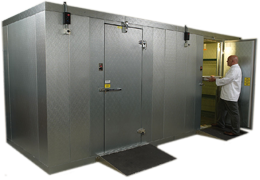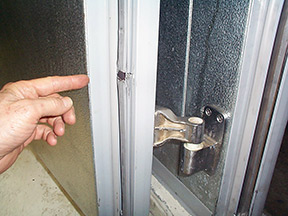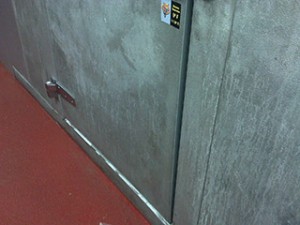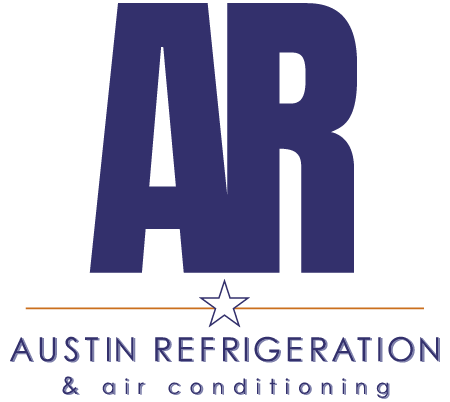


Walk in Freezer Repair - All Manufacturers, All Repairs!
Austin Refrigeration is Texas' leading walk in freezer repair & servicing specialist. We provide sales, design & installation, repairs & service. Austin Refrigeration deals with a wide range of cooling and heating units from all manufacturers. We will perform your walk in freezer repair quickly and efficiently. We can also give you advice and specialist knowledge enabling you to be confident of any new walk in freezer purchase you may be considering.
Quality Walk in Freezer Repair Every Time!
Austin Refrigeration serves commercial food stores throughout Austin, TX and surrounding Communities. At Austin Refrigeration, we are dedicated to providing quality workmanship, professional service, and customer satisfaction every time.
Walk in Freezer Repair 24/7
Whether you're running a family-owned restaurant or a five-star hotel, no walk in freezer repair, walk in cooler repair, or ice machine repair job is too small or too big for us. Our highly skilled commercial refrigeration technicians are available seven days a week, including holidays. RHAC specializes in commercial walk in freezer repair so you can rest assured that your equipment will be in good hands. For speedy and efficient walk in freezer repair service, call us 24/7 7 days a week.
Maintaining Your Walk-in Freezer
Whether you run a restaurant, convenience store or supermarket, your walk-in is an important investment. It should be taken care of to ensure many years of efficient usage. Here are tips for maintaining your walk-in freezer.
How to keep your walk-in freezer operating efficiently:

- Close the door when not in use. Do not block or prop the door open for extended periods of time. Make sure it is closed at all times except when entering and exiting the walk-in.
- Periodically (minimum of twice a year) clean the evaporator and condensing coil. If located outside, the coils should be cleaned more often. Clean the fan blades to reduce drag.
- Make sure fan motors are running at optimum speed.
- On outside condensing units, maintain clear and adequate airflow. For example, do not allow trash or weeds to accumulate around the walk-in.
- Make sure there is nothing stacked around the coil to prevent restricted airflow.
- Do not pile anything on top of the walk-in. This could cause damage to the ceiling panels.
- Occasionally have a service technician check all electrical connections to make sure they are good and tight. Loose wires could cause high amperage, which will cause your unit to use more energy.
- Check for damage or decay in the insulation on suction lines between the condensing unit and evaporator coil. Replace as needed.
- Hinges should be lubricated once a year to ensure they close properly. (Some hinges utilize self-lubricating nylon cams, so this will not be necessary if that is the case.)
- Make sure the lights are off when exiting the walk-in. Lights produce heat, which will cause your unit to run more to hold its optimal temperature. Make sure your walk-in has a switch with a pilot light so you can tell if the light is on without opening the door.
- Check the door sweep for tears and make sure it is sealing properly against the threshold.
- Periodically, check gaskets between panels to make sure they are not cracked or weathered. Replacement of damaged gaskets will ensure your walk-in is efficient and up to local health codes.
How to keep your walk-in freezer clean:

- Soap and water is the best cleaning method for your walk-in. Do not use harsh chemicals as it may react and harm the metal surface of your walk-in. For chemicals not to use read this pdf.
- Minimum of twice a year use a self-rinsing cleaner, soap and water or stiff bristled brush to clean your evaporator and condensing coils.
- Drain lines – at least once a year, work with a service tech to make sure the drain lines are clean and not clogged with any debris.
- Door gaskets – Regularly wipe down with soap and water to prevent bacterial or mold growth. If door gaskets are damaged, cracked or stiff, the magnet will not seal and will need to be replaced.
- Sweep or mop floors to make sure they are kept clean from food debris that will mold or attract pests.
Mistakes operators most commonly make:
- Turning holding temperature too low for product, this causes the refrigeration to overwork.
- Walk-in manufacturers install a thermostat on the outside of the door that reads the internal temperature of the walk-in. There is a chance that the thermostat is faulty or needs to be re-calibrated. Always have a backup thermometer in the walk-in to make sure the walk-in is holding the optimal temperature.
- Stacking boxes or food too close to the door thermometer-sensing bulb or thermostat-sensing bulb can cause a false reading of the temperature in the walk-in.
Advice on walk in freezer safety related issues in Austin, TX:
- Make sure you clean up any liquid spills as soon as they happen. This is especially important in freezers as the liquid will start to freeze immediately and can be dangerous.
- Non-skid strips are available for the floors, to ensure a non-slip environment.
- Keep aisles clear and do not overload walk-in by stacking too much in your freezer. Stack things neatly to make sure you are able to take good inventory of your stock.
- Power outage – A typical walk-in will maintain temperature for about 12 hours as long as door is kept closed. If the power outage lasts longer than 12 hours, consider a back-up generator.
Call Austin Refrigeration in Austin, TX Now and Get on our Schedule Today!
[hubspot type=form portal=21267441 id=adb4d44e-50eb-4c36-ab3f-b889427b3e30]
Diagnose Walk-in Freezer Problems
The ubiquitous walk-in freezer or freezer is an essential part of many cafeterias, restaurants and convenience stores. It is also a large energy user in these facilities but is rarely considered until problems emerge.
Problems include failure to maintain pressure and compressor failure, both of which can result in expensive losses to the products stored in the freezer. These problems, as well as unnecessarily high energy use, can be avoided by observing equipment and taking corrective action.
Walk In Freezer Evaporators
Moisture from the air freezes onto the evaporator coils (the cooling coils in the freezer) and forms an insulating barrier to heat transfer. Airflow also decreases as the passages narrow due to ice buildup. Each evaporator has a defrost cycle to melt frost/ice that has built up on the evaporator coils. Water from the melted ice is drained from the freezer . . . ideally.
It’s not unusual, however, to find evaporators in a state of poor maintenance. For many evaporator units, the ice isn’t melted, or the water isn’t properly drained, resulting in a block of ice taking over the evaporator. When the coil freezes, heat transfer is greatly reduced resulting in the compressor working harder and longer. It works harder because the suction pressure drops making the compressor work at a higher differential pressure, thus requiring more power. It works longer because heat transfer is reduced. When ice buildup is excessive, the compressor will run all the time and the freezer temperature setpoint will not be maintained.
As the ice melts, the water has to drain out of the freezer. This doesn’t always occur. Trapped water that freezes can do significant structural damage to a freezer; especially older ones where cracks allow water to seep in, then freeze and expand. Stalactites and stalagmites of ice appearing in your freezer are reason for swift action to avoid costly damage.
Walk In Freezer Condensers
The condenser coil of the refrigeration system removes heat from the system. It’s not unusual to find condensers located in enclosed spaces or spaces with inadequate air flow to remove heat from the space. The temperature around the compressor rises resulting in higher head pressure for the compressor, which again increases compressor power.
To effectively remove heat, the condenser should be placed in a well-ventilated area where the temperature is controlled to allow heat to be removed easily. Enclosed spaces will require openings for cooling air intake and exhaust. In many cases, a fan will be required to move enough air through the space. If the condenser heat is never needed, it should be exhausted directly outside if possible.
In cases where it may be used for space heating — such as for a nearby dry storage room — controls may be installed to direct the flow indoors for heating, and outdoors when heating is not required.
Condenser coils should also be checked regularly for cleanliness. Dust and debris will act like ice buildup on an evaporator coil. This will insulate the heat transfer surface and reduce airflow, which will make the compressor run harder and longer. In extreme cases, compressors may fail.
Walk In Freezer Refrigerated Space & Shell
Although the space itself doesn’t have any mechanical parts or equipment, it shouldn’t be ignored. The shell of the freezer should be inspected regularly for leaks and loose insulation or panels. Leaks and other voids in the shell can cause excess moisture to accumulate, potentially causing even bigger problems. The door is also a key component of the freezer. Doors must be sealed properly to eliminate air infiltration which increases the cooling load and may cause moisture buildup within the space and on the evaporator. Frost buildup on the door itself is a common occurrence when the door heater fails and has a tendency to either freeze the door shut or keep it from closing. Proper care should also be taken when placing items inside the space. If the space is overcrowded with items, or items are placed in front of the evaporator fans, the circulation of air is greatly reduced along with the performance of the refrigeration system.
"One of the Best Refrigeration Repair Companies I have ever worked with"
~ Bo Bryan
Address
Austin Refrigeration
Austin, TX
Business Hours
Monday-Sunday:
24 Hours a Day
7 Days a Week!
Phone
Austin Office:
(512) 764-1982
COPYRIGHT© 2016. ALL RIGHTS RESERVED - Austin Refrigeration. Walk in Freezer Repair Austin, TX

